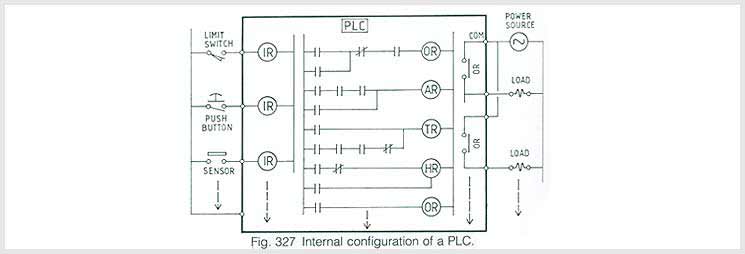Electronic Logic Controllers, also known
as Programmable Logic Controllers (PLC) is a kind of digital computer, that
finds application for automation of electromechanical processes like control
of machinery on factory assembly lines, lighting fixtures etc. The PLCs are
used in many industries and machines like packaging and semiconductor
machines. They operate by monitoring input signals from sources such as
push-button switches, proximity sensors, heat sensors, liquid level sensors,
limit switches, pressure and flow-rate-sensors. When binary logic changes
are detected from these input signals, the PLC reacts through a
user-programmed internal logic switching network and produces appropriate
output signals. These output signals may then be used to operate external
loads and switching functions of the attached fluid power control system.
The PLC's are designed for multiple inputs and output arrangements,
extended temperature ranges, immunity to electrical noise, and resistance to
vibration and impact. Programmable logic controllers eliminates much of the
wiring and rewiring that was necessary with conventional relay-based
systems. Programs to control machine operation are typically stored in
battery-backed or non-volatile memory. Instead, the programmed "logic
network" replaces the previously "hard wired" network. This
logic network may be altered as required by simply programming or
reprogramming the PLC. Thus, the automated processes of a production line or
complex manufacturing machine can be controlled and modified for highly
economical adaptability to a rapidly changing manufacturing environment.




